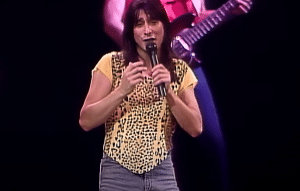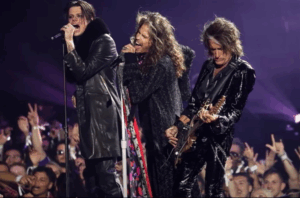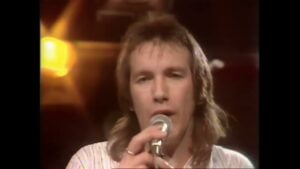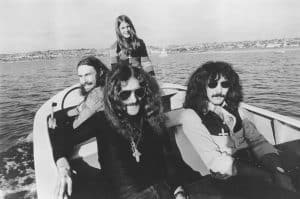15 Of The Most Underrated Classic Rock Songs Of All Time That Truly Deserve More Play

via pwrwindows / YouTube
Classic rock radio tends to focus on the same handful of songs from a few major bands. While these hits are great, many other tracks from the same era are just as strong but rarely heard. These underrated songs either got lost over time or were never fully recognized for their value. Some came from big names but weren’t chart-toppers, while others were buried deep in albums. Here’s a list of classic rock tracks that deserve more attention, not just from fans of the genre but from anyone who loves great songwriting and solid musicianship.
The Golden Age of Rock ‘n’ Roll – Mott the Hoople (1974)
Mott the Hoople is often remembered for “All the Young Dudes,” but this song packs just as much energy. “The Golden Age of Rock ‘n’ Roll” celebrates the spirit of early rock music while adding their glam rock touch.
The lyrics reflect on rock’s roots but with a modern sound for the time. It’s a powerful anthem that blends classic piano riffs with strong vocals and a driving beat. Despite being a fan favorite at concerts, it didn’t gain the long-term recognition that many of their peers’ songs did.
20th Century Boy – T. Rex (1973)
Marc Bolan’s band T. Rex helped define glam rock in the early ’70s, and “20th Century Boy” is one of their most exciting tracks. It has a loud, raw guitar sound and a catchy rhythm that still holds up decades later.
The song wasn’t included on a studio album at the time, which may be why it’s often overlooked. It’s been used in commercials and films, giving it some exposure, but it never became a regular part of classic rock playlists, even though it deserves to be.
Rock ‘n’ Roll Damnation – AC/DC (1978)
AC/DC has a long list of popular songs, but “Rock ‘n’ Roll Damnation” doesn’t always make the cut. It was the lead single from Powerage, yet it’s often left out of live shows and greatest hits collections.
The track stands out because it has a slightly cleaner sound than their usual style, with some hand claps and rhythm changes. Bon Scott’s voice is sharp, and the song balances melody and grit well. Though it charted in the UK, it didn’t reach the same level of fame as their later work.
Action – Sweet (1976)
Sweet had several hits during the glam rock era, but “Action” is often forgotten. It features both heavy guitars and high-pitched harmonies, giving it a unique sound that blends pop with hard rock.
The lyrics reflect frustration with fame and the music industry, something the band experienced at the time. “Action” shows how the group was growing beyond their earlier teen-friendly hits. While it was a hit in the UK, American listeners didn’t latch onto it as much, and it’s rarely heard on classic rock radio today.
Family Snapshot – Peter Gabriel (1980)
Peter Gabriel’s solo work is often known for songs like “Solsbury Hill” and “In Your Eyes,” but “Family Snapshot” shows a different side. Inspired by real events, the lyrics are told from the perspective of a political assassin.
The music builds slowly, starting soft and becoming intense, reflecting the growing tension in the story. Gabriel’s use of character and mood makes this one of his most emotional songs. It didn’t get much airplay, but it’s a standout on his third solo album and reveals his strength as a storyteller.
I Gotsta Get Paid – ZZ Top (2012)
While most people know ZZ Top for their 1980s hits, this song from their later years proves they didn’t lose their edge. “I Gotsta Get Paid” has a gritty blues-rock sound with a modern twist, based on a rap track from the 1990s.
It mixes heavy guitar riffs with their signature swagger, showing they could still create powerful music well into the 2000s. The song gained some attention from commercials, but many rock fans missed it because it came out long after the band’s peak fame.
No Reply at All – Genesis (1981)
“No Reply at All” was part of Genesis’ shift toward pop in the early 1980s. It blends rock with funk, using a horn section that came from Earth, Wind & Fire’s horn players. This gave the track a fresh and lively sound.
Though it charted modestly in the U.S., many fans of their earlier progressive style dismissed it. Over time, it has become clear that the song’s mix of clever lyrics and rhythm deserves more credit. It shows how the band could change styles without losing quality.
Ma-Ma-Ma Belle – Electric Light Orchestra (1973)
Electric Light Orchestra is usually known for polished pop-rock with strings, but “Ma-Ma-Ma Belle” has a harder edge. It’s guitar-heavy and raw, showing a rougher side of the band’s sound before their later radio hits.
Jeff Lynne’s vocals are forceful, and the rhythm section drives the song with real power. Despite its strength, it didn’t break through on the charts and is often overshadowed by their softer, more commercial songs. Fans who dig deeper into their catalog often find it to be one of their most underrated.
Sundown – Gordon Lightfoot (1974)
Though Gordon Lightfoot is better known for folk and storytelling songs, “Sundown” is a track with a darker, rock-influenced feel. It was a hit when released but doesn’t get much classic rock airplay today.
The lyrics hint at jealousy and trouble in a relationship, which adds to the song’s mood. Its steady rhythm and sharp guitar parts set it apart from his more acoustic tracks. While it crossed over onto pop charts, it deserves more attention as a well-crafted rock-influenced single.
When The Lady Smiles – Golden Earring (1984)
Golden Earring is usually remembered for “Radar Love,” but “When the Lady Smiles” is one of their strongest songs. It has a catchy hook and strong guitar work, but the video’s controversy hurt its success in the U.S.
The track was a big hit in Europe, and the band continued to perform it regularly. Its energy and production still sound fresh today. It didn’t reach the same fame in North America, but it’s a highlight in the band’s long discography and worth rediscovering.
Echoes – Pink Floyd (1971)
“Echoes” is one of Pink Floyd’s most ambitious songs, running over 20 minutes long. It takes the listener through different moods, from quiet soundscapes to loud, dramatic peaks. It’s often overshadowed by The Dark Side of the Moon and The Wall.
The track shows the band’s full creative range and helped shape their later style. Because of its length, it was never played much on radio, but fans of the group often consider it a hidden gem. It’s essential for understanding the band’s development in the early ’70s.
Jet – Paul McCartney & Wings (1974)
“Jet” was a hit in the mid-1970s, but it doesn’t get as much airplay now as other Wings songs like “Band on the Run.” It’s upbeat and has a fast tempo, mixing rock and pop with a rich production style.
The lyrics are strange but catchy, and the layered sound includes horns and heavy guitars. McCartney’s vocal performance is full of energy. Though it was successful when released, it’s rarely brought up in discussions about his best post-Beatles songs, which is surprising given how strong it still sounds.
A Life Of Illusion – Joe Walsh (1981)
Joe Walsh is better known for his work with the Eagles, but this solo track stands out. “A Life of Illusion” has a relaxed groove with thoughtful lyrics about disappointment and false promises. It features Walsh’s signature guitar style and clear vocals.
Though it reached the rock charts, it’s often left out of classic rock playlists today. The song’s mix of sharp lyrics and melody makes it memorable, but it never reached the same level as his better-known tracks like “Rocky Mountain Way.” It deserves more attention than it gets.
Touch of Grey – Grateful Dead (1987)
“Touch of Grey” became the Grateful Dead’s only major hit on the Billboard Hot 100, even though the band had been around for decades. The song came from their 1987 album In the Dark and has a hopeful message.
Its lyrics talk about aging and resilience, and the catchy chorus made it popular with a broader audience. Some longtime fans dismissed it as too commercial, but the song still holds up musically. Despite its success, it’s rarely played outside of Dead-focused circles, though it helped introduce new fans to the band.
The Spirit of Radio – Rush (1980)
Rush was known for long, complex songs, but “The Spirit of Radio” found a balance between progressive rock and radio-friendly sound. The song was inspired by a real Toronto radio station and mixes styles, including a reggae-like section near the end.
The lyrics comment on the changes in the music business, and the guitar work by Alex Lifeson is especially sharp. Though it’s well-loved by Rush fans, it doesn’t get as much airplay as “Tom Sawyer” or “Limelight.” Still, it’s one of the band’s most accessible and well-written tracks.



























